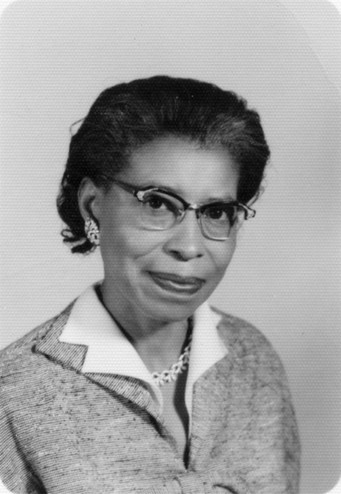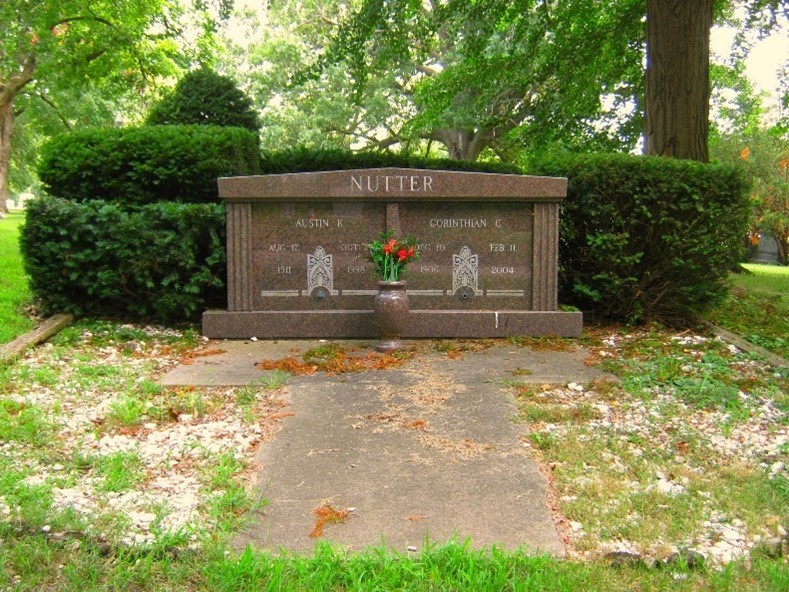Corinthian Clay Ricks Nutter
Introduction
Text-to-speech Audio
This is the final resting place of Corinthian Clay Ricks Nutter, an educator who was among the leading advocates for the integration of public schools in Kansas City. A teacher, scholar, and recipient of numerous awards for civil rights. Nutter taught at Walker School in Merriam, Kansas, as well as Westview Elementary School in Olathe, Kansas. In 1949, she was involved in the Kansas Supreme Court decision Webb v. School District No. 90.
Images
Corinthian Clay Ricks Nutter

Ms. Nutter at Walker Elementary School in Olathe, KS

Monument in Forest Hills Cemetery

Backstory and Context
Text-to-speech Audio
Corinthian Ricks was born in Forney, Texas, to Robert R. and Roxie Anna (Ford) Ricks on 10 December 1906. Her father worked for the railroad. Her mother was an itinerant worker and Nutter was frequently taken out of school. She fell behind in class and dropped out at age 14. In 1922, after a brief marriage, she moved to Kansas City, Missouri, and lived at the YMCA. She played the piano for numerous entertainers and the organ for silent movies. She found lodging with a member of Bennie Moten’s jazz band. Nutter became a friend of Moten and his pianist, William “Count” Basie.
She earned her high school diploma in 1936. She commuted to Western University in Quindaro to complete her bachelor’s degree. In 1938 she received a Kansas teaching certificate. She began commuting to Emporia state University in pursuit of her master’s degree in education. She married Austin K. Nutter in Kansas City, Missouri, on June 2, 1941. He died in 1998.
She was hired to teach at Walker Elementary School in Merriam. The segregated school had two classrooms and eight grade levels. It was run down and lacked indoor plumbing. The school district funded a new elementary school with proceeds from a bond election, which opened in 1947. When African American students were denied access to the new school, parents and community activist Esther Brown organized a legal challenge and 39 of 41 students and their families boycotted the school. Nutter continued to teach the students, holding classes in church basements and living rooms. She received a small stipend from the NAACP for her efforts but said she would have done it for nothing. She provided key testimony when the case reached the Kansas Supreme Court. She said, “Schools shouldn’t be for color. They should be for the children.” The Kansas Supreme Court upheld Webb v. School District No. 90 in 1949 and African American children were allowed entrance to the new school.
Nutter later moved to Olathe where she taught at Westview Elementary School. She eventually became the school’s principal. She retired in 1972 and continued to be active in her community. She was a life member of the NAACP and a member of Paseo Baptist Church. She received the YWCA of Greater Kansas City Racial Justice Award in 2003, the Humanitarian Award for human and civil rights, and was named to the Rosa Parks Wall of Tolerance in 2003. She was inducted into the Mid-America Education Hall of Fame at the Kansas City (Kansas) Community College.
Nutter died, at 97, in Shawnee, Kansas, on 10 February 2004. She is buried in Forest Hills Cemetery, block 53, in Kansas City, Missouri.
Sources
Corinthian Clay Nutter, Kansapedia, Kansas State Historical Society https://www.kshs.org/kansapedia/corinthian-clay-nutter/19914 accessed 9/17/23
Corinthian Clay Ricks Nutter,Find a Grave, https://www.findagrave.com/memorial/86755558/corinthian-clay-nutter accessed 9/17/23
www.findagrave.com
www.findagrave.com
www.findagrave.com
